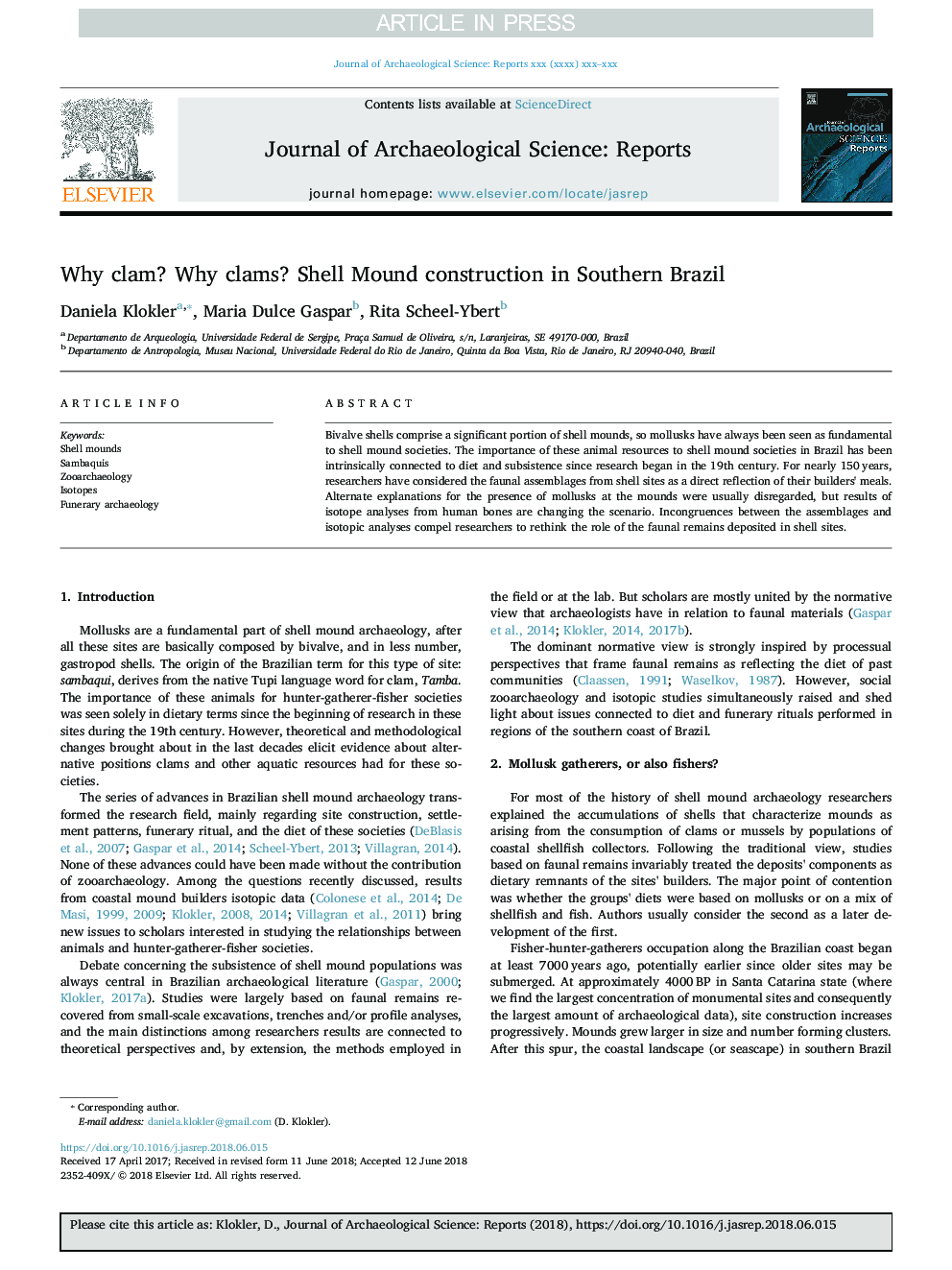| Article ID | Journal | Published Year | Pages | File Type |
|---|---|---|---|---|
| 11005196 | Journal of Archaeological Science: Reports | 2018 | 8 Pages |
Abstract
Bivalve shells comprise a significant portion of shell mounds, so mollusks have always been seen as fundamental to shell mound societies. The importance of these animal resources to shell mound societies in Brazil has been intrinsically connected to diet and subsistence since research began in the 19th century. For nearly 150â¯years, researchers have considered the faunal assemblages from shell sites as a direct reflection of their builders' meals. Alternate explanations for the presence of mollusks at the mounds were usually disregarded, but results of isotope analyses from human bones are changing the scenario. Incongruences between the assemblages and isotopic analyses compel researchers to rethink the role of the faunal remains deposited in shell sites.
Related Topics
Social Sciences and Humanities
Arts and Humanities
History
Authors
Daniela Klokler, Maria Dulce Gaspar, Rita Scheel-Ybert,
